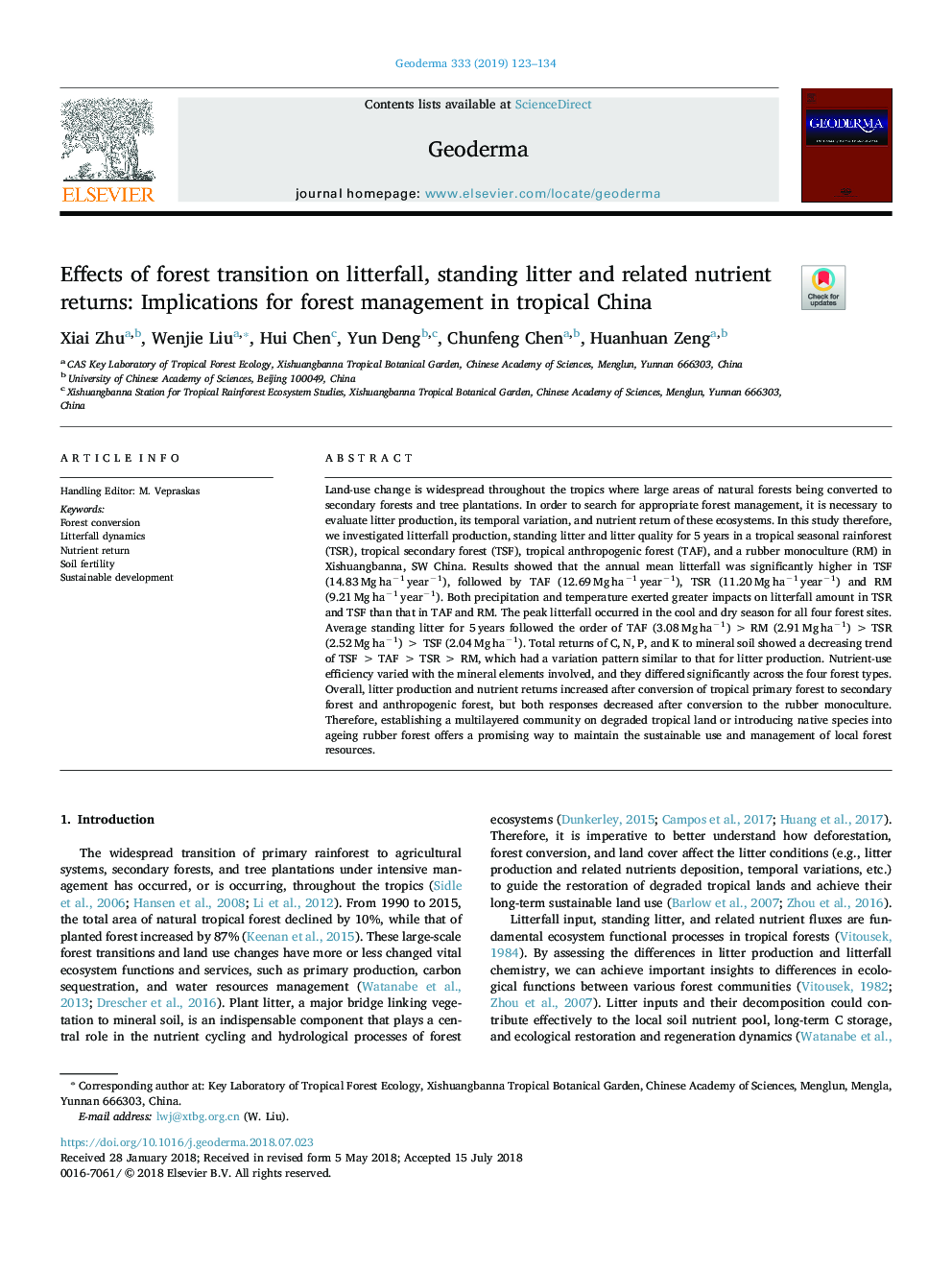| کد مقاله | کد نشریه | سال انتشار | مقاله انگلیسی | نسخه تمام متن |
|---|---|---|---|---|
| 8893850 | 1629384 | 2019 | 12 صفحه PDF | دانلود رایگان |
عنوان انگلیسی مقاله ISI
Effects of forest transition on litterfall, standing litter and related nutrient returns: Implications for forest management in tropical China
ترجمه فارسی عنوان
تأثیر گذار جنگل بر سطح آب زیرزمینی، بستر ایستاده و بازده مرتبط با مواد مغذی: پیامدهای مدیریت جنگل در چین گرمسیری
دانلود مقاله + سفارش ترجمه
دانلود مقاله ISI انگلیسی
رایگان برای ایرانیان
کلمات کلیدی
تبدیل جنگل، دینامیک لرزه ای، بازگشت مواد مغذی، باروری خاک، توسعه پایدار،
موضوعات مرتبط
مهندسی و علوم پایه
علوم زمین و سیارات
فرآیندهای سطح زمین
چکیده انگلیسی
Land-use change is widespread throughout the tropics where large areas of natural forests being converted to secondary forests and tree plantations. In order to search for appropriate forest management, it is necessary to evaluate litter production, its temporal variation, and nutrient return of these ecosystems. In this study therefore, we investigated litterfall production, standing litter and litter quality for 5â¯years in a tropical seasonal rainforest (TSR), tropical secondary forest (TSF), tropical anthropogenic forest (TAF), and a rubber monoculture (RM) in Xishuangbanna, SW China. Results showed that the annual mean litterfall was significantly higher in TSF (14.83â¯Mgâ¯haâ1â¯yearâ1), followed by TAF (12.69â¯Mgâ¯haâ1â¯yearâ1), TSR (11.20â¯Mgâ¯haâ1â¯yearâ1) and RM (9.21â¯Mgâ¯haâ1â¯yearâ1). Both precipitation and temperature exerted greater impacts on litterfall amount in TSR and TSF than that in TAF and RM. The peak litterfall occurred in the cool and dry season for all four forest sites. Average standing litter for 5â¯years followed the order of TAF (3.08â¯Mgâ¯haâ1)â¯>â¯RM (2.91â¯Mgâ¯haâ1)â¯>â¯TSR (2.52â¯Mgâ¯haâ1)â¯>â¯TSF (2.04â¯Mgâ¯haâ1). Total returns of C, N, P, and K to mineral soil showed a decreasing trend of TSFâ¯>â¯TAFâ¯>â¯TSRâ¯>â¯RM, which had a variation pattern similar to that for litter production. Nutrient-use efficiency varied with the mineral elements involved, and they differed significantly across the four forest types. Overall, litter production and nutrient returns increased after conversion of tropical primary forest to secondary forest and anthropogenic forest, but both responses decreased after conversion to the rubber monoculture. Therefore, establishing a multilayered community on degraded tropical land or introducing native species into ageing rubber forest offers a promising way to maintain the sustainable use and management of local forest resources.
ناشر
Database: Elsevier - ScienceDirect (ساینس دایرکت)
Journal: Geoderma - Volume 333, 1 January 2019, Pages 123-134
Journal: Geoderma - Volume 333, 1 January 2019, Pages 123-134
نویسندگان
Xiai Zhu, Wenjie Liu, Hui Chen, Yun Deng, Chunfeng Chen, Huanhuan Zeng,
